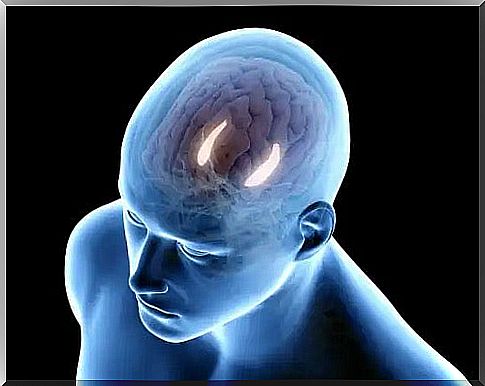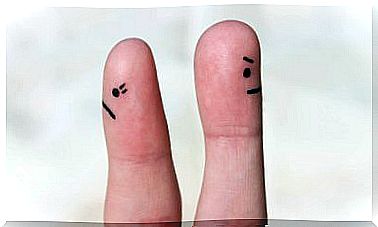The Paradox Of Panic Attacks

Because of its prevalence in the general population, we are likely to all know someone who has had or will have a panic attack at some point in their life. This is precisely why it is important to understand the paradox of panic attacks.
Anxiety is the leading symptom in both panic attacks and generalized anxiety disorders, but we speak of different situations. Anxiety disorders express themselves as a chronic permanent state, with panic disorders sudden panic attacks occur, which develop like attacks and can recur.
People who experience a panic reaction feel like they are dying. The physiological activation occurs abruptly and is very intense. The symptoms are unpleasant and sometimes frightening, but it is just a false perception, as panic attacks are rarely fatal.
We therefore speak of a paradox that occurs with recurring panic attacks. Why do affected people who already know that they will not die from a panic reaction experience this fear again and again? Why is the panic attack just as intense or often worse the next time?
The paradox of panic attacks
The Feedback Process: Symptoms and Disastrous Assessment
Before we talk about the panic attack paradox, it is important to understand the panic attack mechanism. There are several explanatory models that outline the idea of multiple factors feedback:
- Physiological or cognitive change: These include, but are not limited to, physical tension, anger, frustration, fear … These are general conditions that lead to tension.
- Perception of physical changes: Those affected interpret physical signs as an indication of a possible panic attack. However, this can also occur without these warning signs.
- Threat association: Patients see physical changes as a danger and therefore develop even more fear, which ultimately actually leads to a panic attack.
In this cycle, there are primary symptoms that are perceived first (dizziness, palpitations …) and secondary signs (sweating, tremors) … that occur when these symptoms are assessed negatively. They arise when the person concerned is afraid of the panic reaction and it is therefore actually triggered.
This feedback process feeds on constantly. Anyone who has already had the symptoms of a heart attack is very afraid that this situation could repeat itself. Excessive sweating can be a sign of this. This perception increases fear and favors a panic reaction. The negative feedback process can prevent this, but fear-reducing processes are slower. Various coping strategies can help with this.
The cognitive theory of the panic attack
Catastrophic thoughts arise automatically and instantly in panic disorders and agoraphobia. Affected people often have a tendency to interpret body sensations negatively. Because of this distortion, they find negative things in every context. You always see the glass half empty and never half full.
An example of this is the phrase “My heart is beating fast because …”. It could end in different ways: “… I saw my girlfriend”, “… I am happy”, or negative “… because I have a heart attack”. Affected people automatically think of the worst possibility immediately.
The key factor in disaster thinking is the mindset, it’s not so much about the symptoms themselves.
The Paradox in Panic Attacks: Why It’s Always Present
When a person who is afraid of mice is in a room full of rodents and sees that they are not a threat or danger, the mouse phobia usually goes away (habituation). This happens in almost all areas of life. A child stops dreading school once they get used to it and know that there is no threat. Exposure is a technique that can be used to overcome anxiety through habituation. Those affected learn that these situations do not result in catastrophic consequences.
In the same way, we might think that initial symptoms of a panic reaction (such as palpitations or dizziness) are no longer anxiety-inducing if the person concerned already knows after an initial experience that there is no risk of a heart attack.
Some people have one panic attack in their lifetime and never again afterwards. But it often happens that the first panic attack is followed by others, which can happen several times a day or only once in several years.
Panic priming
Depending on the type of trigger, there is more or less fear. Panic priming means that certain associations are present in the memory based on previous experiences, which mostly unconsciously influence the reaction. It is difficult to do anything about it as these associations are usually biological and evolutionary. It is often life-threatening situations as triggers, including fear of falling into depth.
It is therefore much more difficult to cope with fears that arise from previous physical experiences. The fact that there was no heart attack last time does not mean that it will not happen next time. It is like fear of a snakebite: The fact that the snake didn’t bite the first time doesn’t mean that you are protected from it the next time.
Emotional memories in the hippocampus
The biochemist P. Quijada explains that the hippocampus is responsible for consolidating dangerous events in the form of memories. This means that experienced panic attacks are “stored” in the hippocampus. So there are emotional memories left. Sufferers know how bad it made them feel, and it is very difficult to erase these memories.

Behaviors that exacerbate the problem
People who have already had a panic attack usually try to avoid situations or stimuli that could lead to it again. This avoidance behavior is intended to increase safety, but makes the problem noticeably worse. So the paradox relates not only to the panic reaction, but also to the fear, which is only increased by avoidance.
The paradox of panic attacks
Even if there is no threat after a panic reaction, it does not confirm that there is nothing to fear. On the contrary, a new panic attack only reinforces the fear. Those affected find a panic attack just as dangerous as a heart attack. Even if they do not die from it, they go through a situation in which they are “about to die” again.
Even so, panic disorders and panic attacks are usually easy to treat. Through psycho-education, cognitive restructuring, behavioral techniques (relaxation, breathing …), exposure and other therapies, affected people can be treated successfully in most cases.









